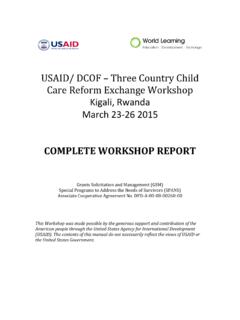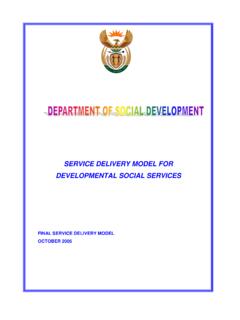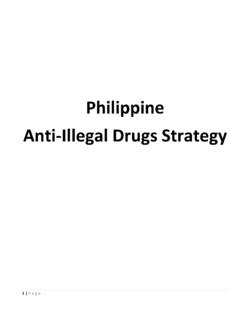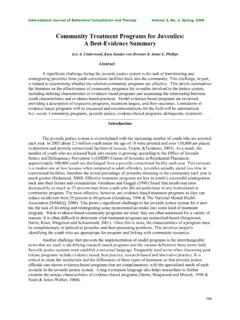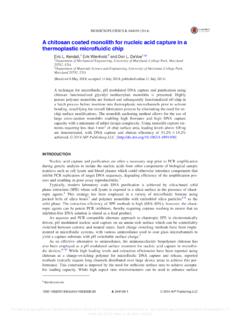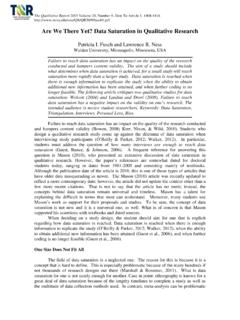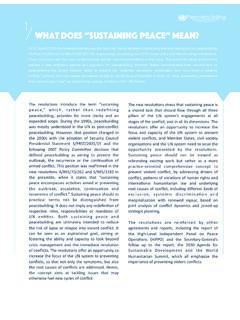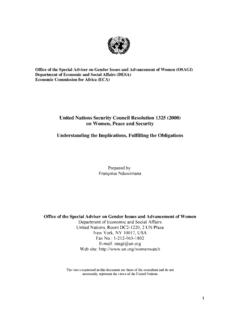Transcription of Solutions for refugees - UNHCR
1 7 CHAPTER 7 Solutions for refugees 184 The 10-Point Plan Solutions for refugees Chapter 7 Chapter 7 Solutions for refugees The 10-Point Plan 1857 Introduction 186 Operationalizing Solutions for refugees : Suggestions for stakeholders and support UNHCR can provide to partners Facilitating self-reliance pending a durable solution 188 Costa Rica: House of Rights of Desamparados 188 Morocco: Women Leading for Livelihoods Initiative - Community Centre for RefugeeWomen and Children 189 UNHCR : Examples of Livelihood Projects 190 Quick Impact Projects: A Provisional Guide (operational tool) Durable Solutions Voluntary repatriation 191 Burundi: National Plan of Action to Educate Repatriated Children 192 UNHCR : Examples of Refugee Repatriation 193 The Sample Tripartite Voluntary Repatriation Agreement (operational tool) Local integration 193 Belarus, Moldova and Ukraine: Regional Local Integration Project 194 Iran: Comprehensive Regularization Plan for Foreign Nationals 195 Panama: Regularization Law and Public Awareness Programme 196 Tanzania: Burundi Naturalization, A Model for Local Integration and Durable Solutions for Protracted refugees 196 Central Europe: The Integration Guide and Evaluation Tool for Refugee Integration (operational tool) Resettlement 197 Resettlement Component of the Mexico Plan of Action 198 Italy: Resettlement of a Group of Eritrean Women Detained in Libya 199 Romania.
2 Emergency Transit Centre Solutions based on migration frameworks 200 Malaysia: Short-term Residence Permits for Acehnese refugees and Migrants 201 Nigeria: Regularization of Sierra Leonean and Liberian refugees 202 Selected References 204 Contents186 The 10-Point Plan Solutions for refugees Chapter 7 Once refugee status has been determined and immediate protection needs are addressed, refugees may need support to find a long-term, durable promotes three durable Solutions for refugees as part of its core mandate: voluntary repatriation; local integration; and is no hierarchy of durable Solutions ; rather, an integrated approach that combines all three Solutions and is implemented in close cooperation with countries of origin, host States, humanitarian and development actors, as well as the refugees themselves usually offers the best chances for success.
3 Enabling refugees to become self-reliant pending the realization of an appropriate long-term solution is an important first step towards achieving any of the three durable Solutions . Working towards Solutions can also reduce the need for irregular onward movements by concept of durable Solutions has traditionally been associated with permanent settlement, whether in the host country, a third country or the country of origin. However, in the context of an increasing interrelationship between refugee protection and international migration, some refugees or former refugees are using temporary or permanent alternatives offered by migration schemes, either in the host country or through regularized onward movements to a third country. Such possibilities may be considered particularly where the refugee is not able to sustain him/herself in the host country or where refugee protection is no longer necessary but where reintegration possibilities remain limited in the country of origin ( during an immediate post-conflict phase).
4 Migration schemes have also been used to broaden the protection space for refugees in States that are not party to the 1951 Convention. This Chapter does not purport to outline anything radically new or specific to mixed movements regarding the three classic durable Solutions for refugees . The practical examples contained in this Chapter constitute a small sample of the many existing initiatives on Solutions for refugees . Since there is a range of publications already available on this issue, these sections are brief and cross-reference is made to sources where additional guidance can be obtained. Some of the examples in Chapter 9 (return of non- refugees ) are also relevant to this Chapter and can provide additional 7 Solutions for refugees The 10-Point Plan 1877 Suggestions for stakeholders Adopt a comprehensive approach to finding appropriate durable Solutions for persons recognized as refugees or others in need of international protection.
5 Undertake activities to facilitate voluntary repatriation and sustainable reintegration , in cooperation with relevant partners, as well as post-return monitoring. Explore local integration options such as leave to remain and naturalization for certain groups. Explore resettlement options and quotas for specific groups, use resettlement strategically and coordinate resettlement needs with a view to adopting a region-wide approach . Explore opportunities within migration frameworks as a complementary avenue for UNHCR can provide to partnersVoluntary Repatriation Provide information and advice on the situation in the country of origin. Facilitate return, by negotiating tripartite agreements between the country of asylum, country of origin and UNHCR .
6 Promote Go and See Visits to facilitate the repatriation process. Monitor the repatriation and reintegration process in cooperation with other key actors. Promote development assistance and sustainable integration Advocate for the advantages of integrating the refugee population into host communities. Advise on laws and policies on asylum and migration to facilitate integration. Promote dialogue between countries of asylum to share good practices on local integration. Identify implementing partners to participate in reintegration projects, such as NGOs for micro-finance schemes, vocational training and community mobilization Coordinate resettlement needs, and promote cooperation among relevant actors. Develop resettlement criteria, and identify candidates for resettlement.
7 Promote resettlement in combination with other durable Solutions . Lobby for resettlement opportunities, including increased quotas, diversified intake, introduction of more flexible selection criteria, and a greater number of resettlement country agreements. Ensure emergency resettlement, including through emergency resettlement Solutions for refugees : Suggestions for stakeholders and support UNHCR can provide to partners188 The 10-Point Plan Solutions for refugees Chapter Facilitating self-reliance pending a durable solutionAccess to durable Solutions for refugees will be easier if they have been able to become self-reliant pending the identification and establishment of this solution. Self-reliance means the economic and social ability of the individual refugee, household or community to meet essential needs in a sustainable manner and with dignity.
8 In practice, self-reliance usually means granting refugees access to the economy in the host country, including through access to the labour market. Education, micro-financing, language courses, vocational training, and access to adequate accommodation and social services can help refugees to become can be encouraged during the asylum procedures, prior to recognition of refugee status, and pending the identification of a durable solution. The scope of benefits and access offered can be expanded when the person is recognized as a refugee. Facilitating self-reliance over an extended period allows the time spent between arrival, recognition of refugee status and identification of durable Solutions to be constructive, both for refugees themselves and for the host community.
9 It also improves the sustainability of any future RICA: HOUSE OF RIGHTS OF DESAMPARADOS2007 PRESENTA. background and RationaleDesamparados is one of the most populated, impoverished counties in San Jos , Costa Rica. The population in this county includes improperly documented migrants, refugees , asylum-seekers and other persons with specific needs, including victims of sexual and gender-based violence (SGBV).The House of Rights, which is based on an agreement between UNHCR and the Municipality of Desamparados, is a project that aims to protect the rights of asylum-seekers and refugees as well as migrants and local persons at risk. It also seeks to provide counselling to such within migration frameworksTo enlarge the protection space available in a country, UNHCR may: advocate for complementary migration options for refugees , in accordance with the specific needs of the country of asylum and the profile of refugee groups ( advocate for the provision of work permits where labour shortages in the country of asylum can be filled by refugees ); advocate for cultural or family-oriented migration avenues, and lobby for group amnesties; enhance cooperation with regional and national agencies engaged in labour issues, including employer and professional groups, to explore labour migration options for refugees .
10 And continue to raise awareness about the specific protection needs and rights of refugees while providing access to migration 7 Solutions for refugees The 10-Point Plan 1897b. Actors Associaci n de Consultores y Asesores Internacionales (ACAI), UNHCR s main implementing partner in Costa Rica; Municipality of Desamparados; UNHCR ; and University of Costa Actions The House of Rights applies a refugee self-reliance strategy that focuses on providing adequate orientation and legal aid to refugees and asylum-seekers in order to assist them in finding employment and accessing public services, especially in the areas of health and education. Through legal counselling, training on HIV/AIDS and sexually transmitted infections (STI) prevention, employment opportunities, and adequate use of government services, such as health, education and other social services, the projects aims to empower those persons in the county who are most in need.










